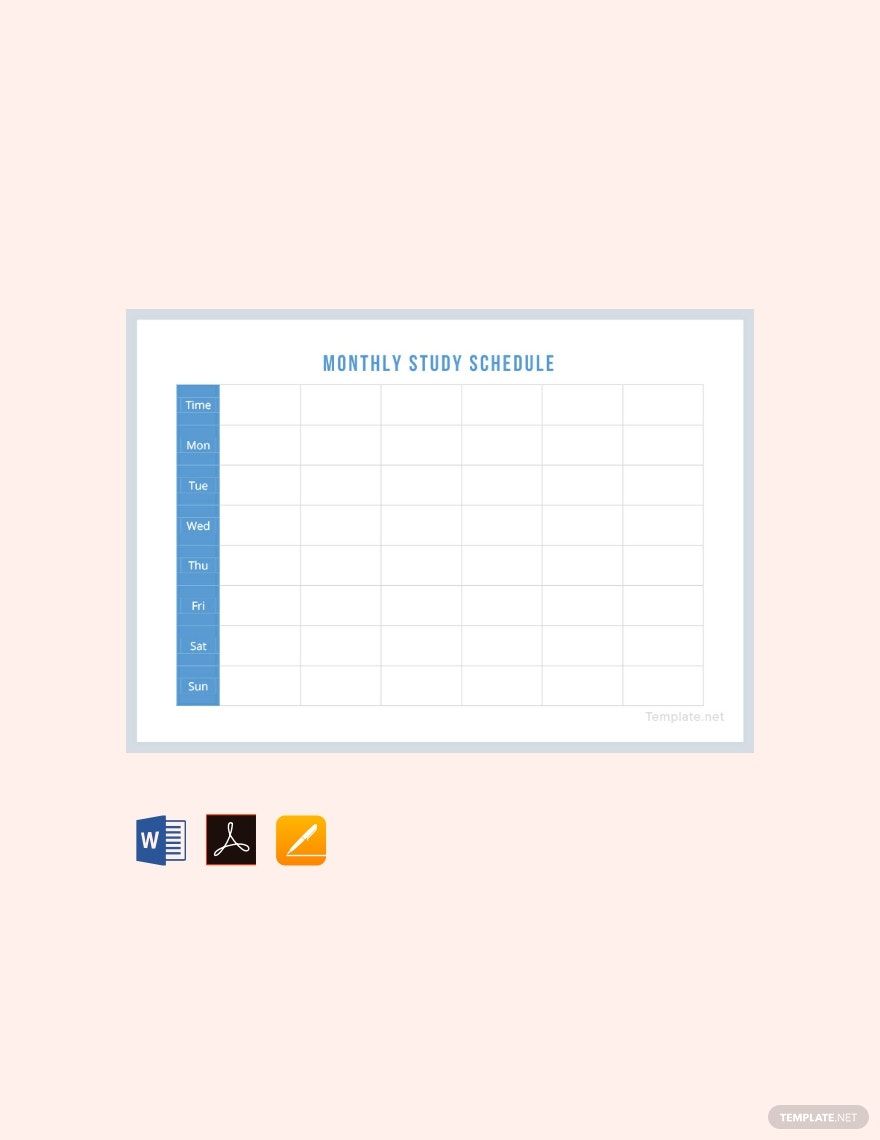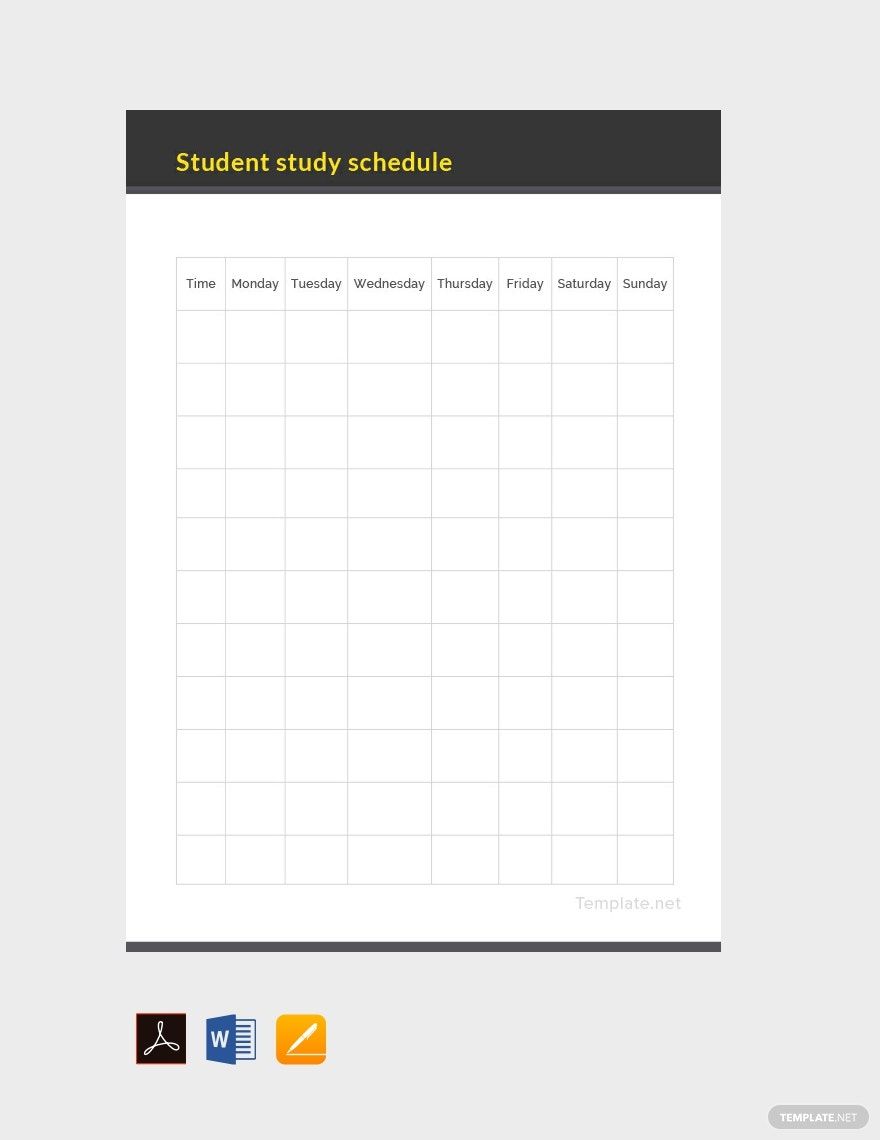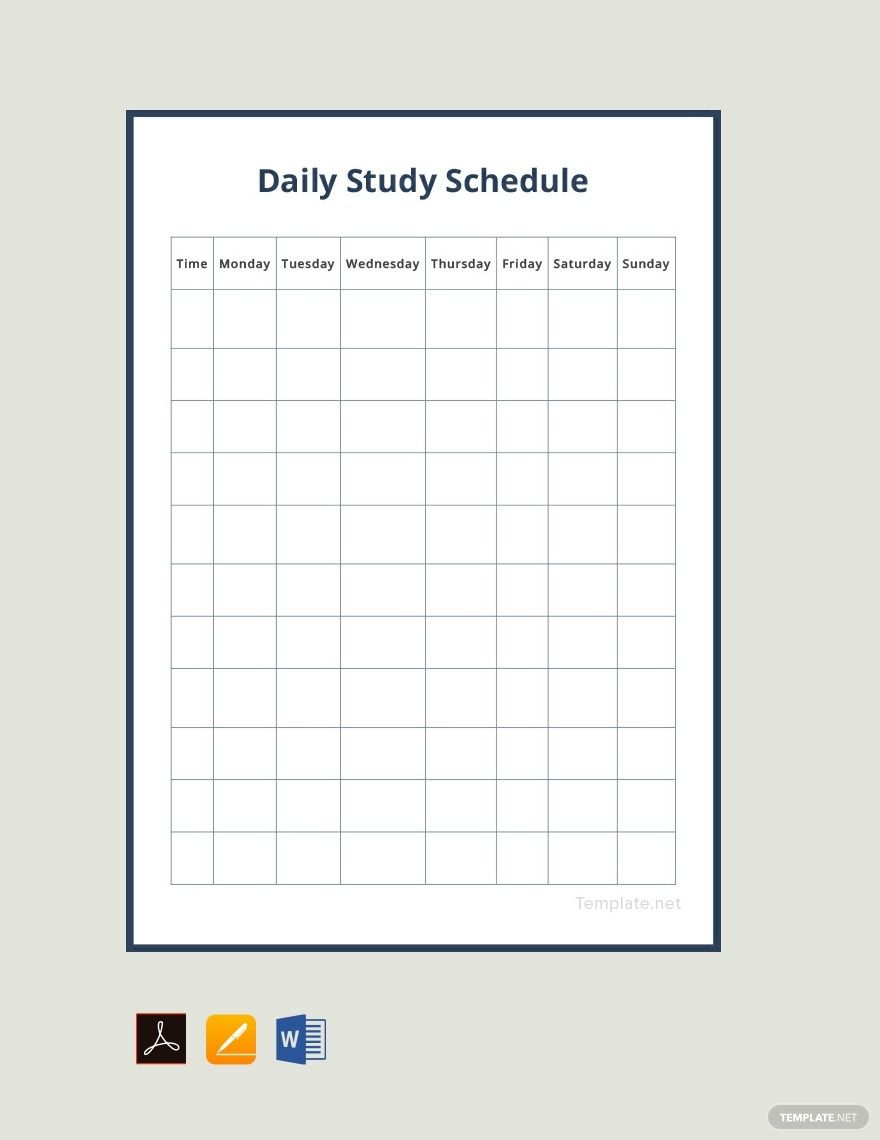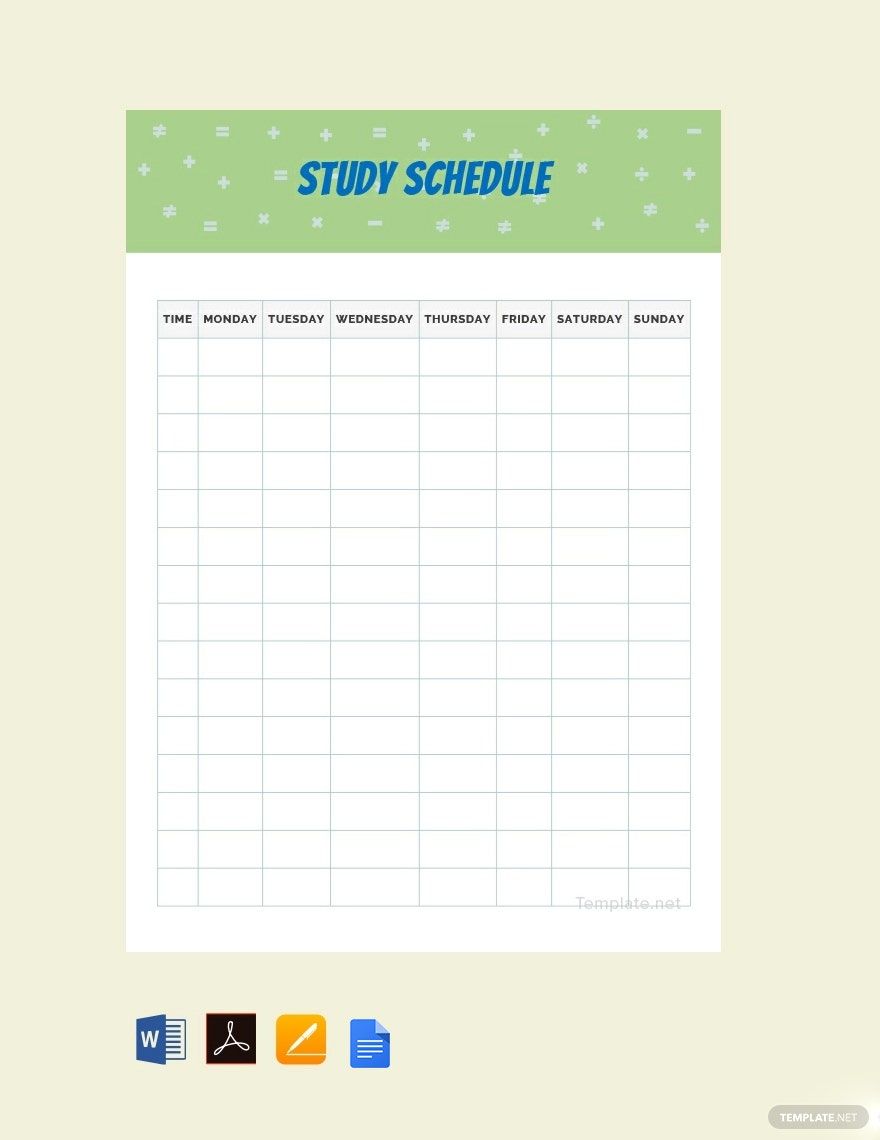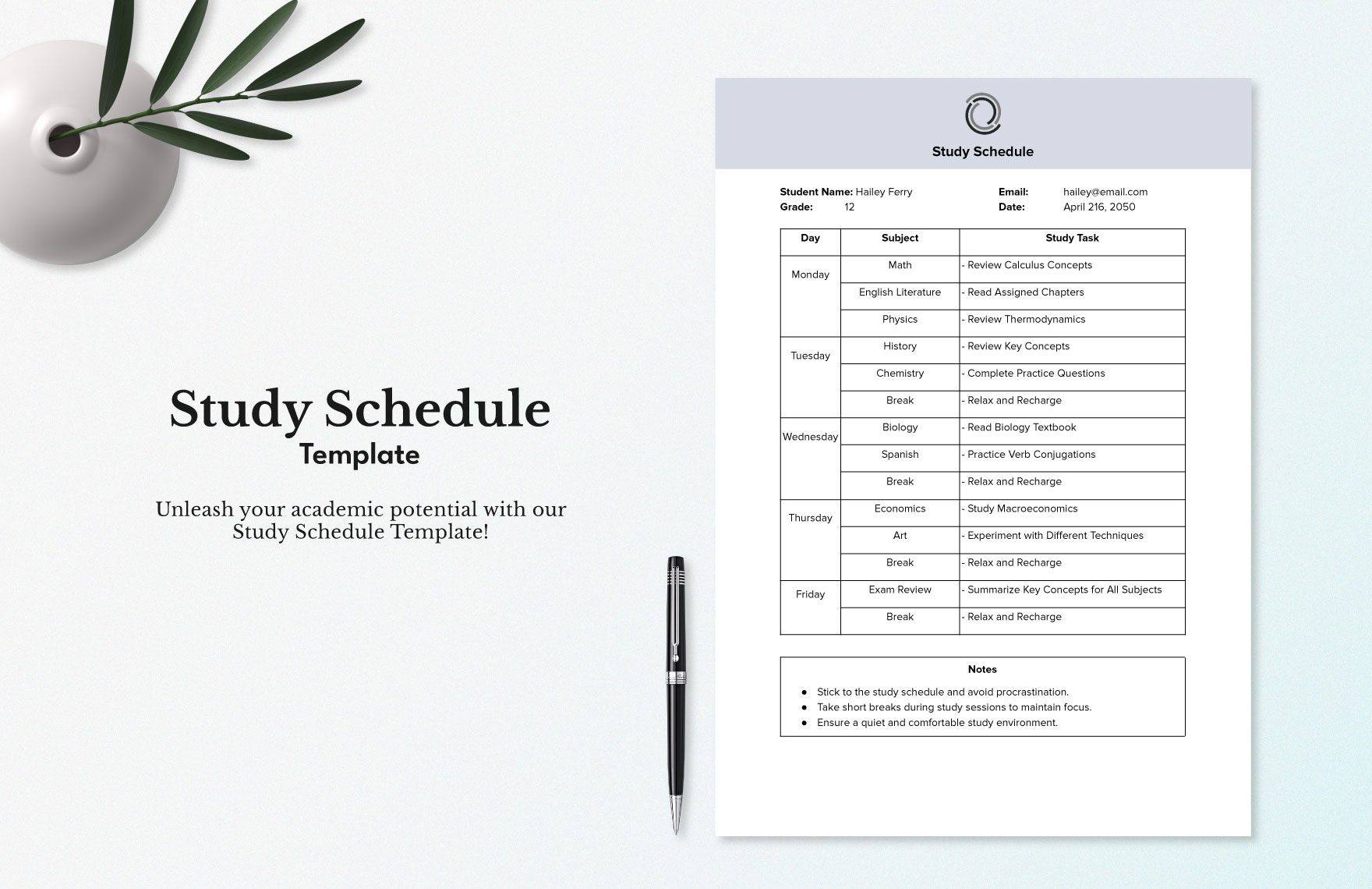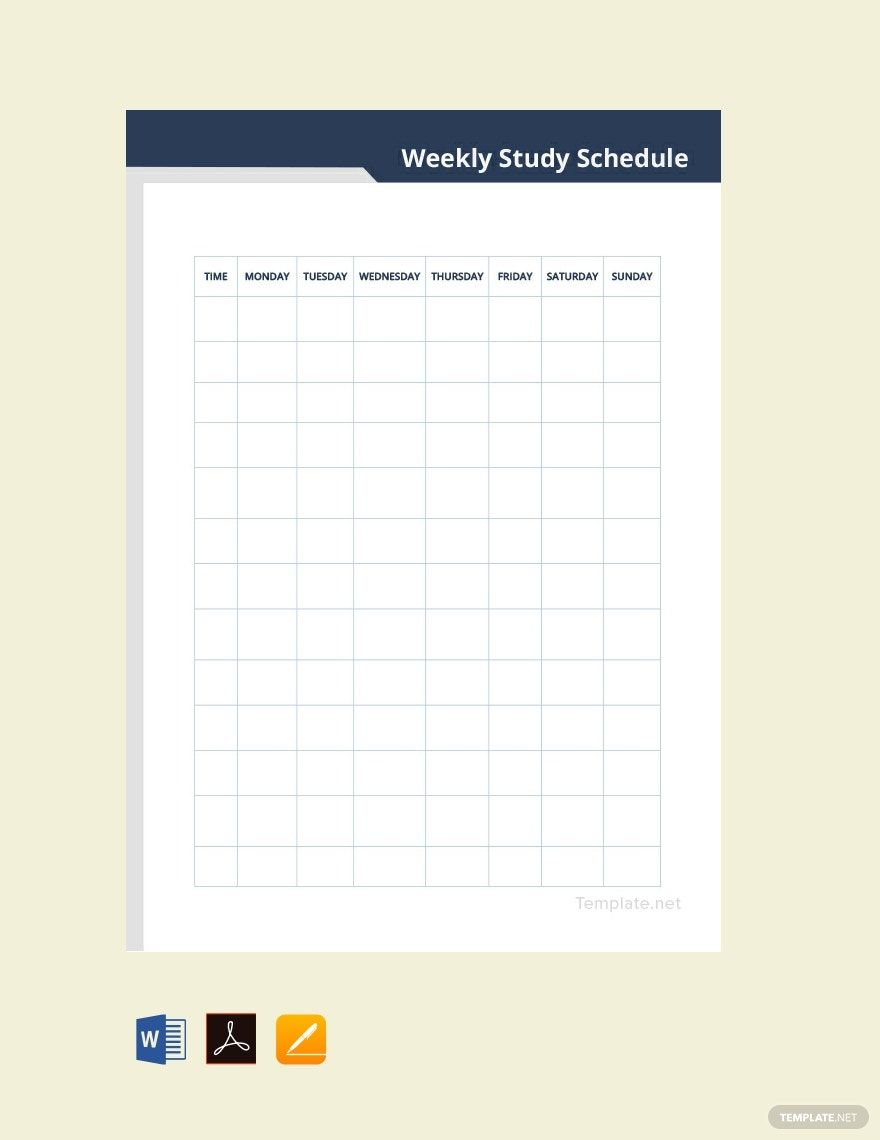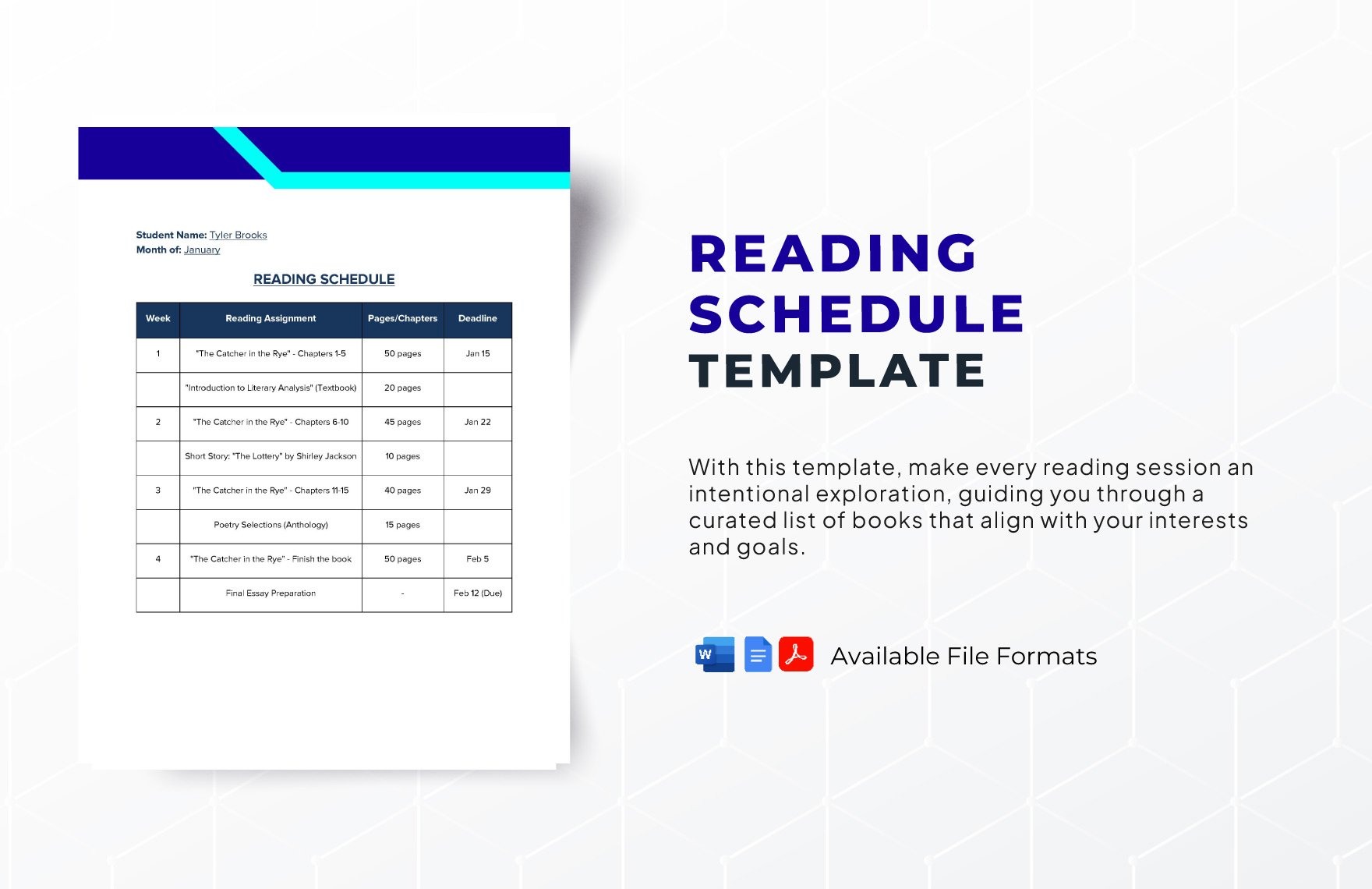“If you fail to plan, you are planning to fail”, as once stated by Benjamin Franklin. And planning indeed is one of the right doings that often leads to success. But with the pile of projects, exams, and assignments, often, we are left with the only option of cramming. That is why we help you stick to your priorities with our selections of Ready-Made and High-Quality Study Schedule Templates in PDF. Print your document in A4 or US Letter sizes. Now, you don’t have the reason to fail. Find the convenience in following your study plans with a handy material in hand. Download, customize, and print a template today!
Study Schedule Templates in PDF
Explore professionally designed study schedule templates in PDF that are free, customizable, and printable. Elevate your organization today!

Get Access to All Schedule Templates

How to Make a Study Schedule in PDF
For every student, juggling different tasks in one day is a normal situation. Final exam, revisions, and monthly projects, it’s a tough life to deal with. Indeed, realigning all your goals to your action could sometimes be contradicting. Time management is crucial but doable for anyone who is aiming high. Perhaps, according to the assessment made by the US Department of Commerce, 16 of 64 individuals balance shifting hours for work and study. This only explains that flexibility of time is a guarantee when one is determined. So, what is your excuse now? Aim high, but balance a good life with a daily schedule in hand. That is why we help you create a Study Schedule in PDF with the following tips below.
1. Develop Short and Long-Term Study Goals
What could be the best time to study? Sometimes, what determines your motivation are the goals you establish. But what happens if you don’t have one? If you are a college or high school student, it’s important to start setting a coherent plan today. Establish a study goal. To do so, list your priorities. Know your weaknesses. Here, you’ll have to figure out which subject needs to improve. Should you bring out the best on oral examination? Things like this enhance your actions that line up with your objective.
2. Draft the Subjects and Tasks
Are you preoccupied with the rest of the week? Now, create a list of all your subjects. Go through each. Distinguish if you have tasks to finish or improve. Arrange all of them according to their importance. Label them with a number. To do this correctly, consider your academic grading. Assess what your weakest points are. But of course, set a time for reading and reviews you can do after school.
3. Construct a Table
What could be the best strategy to keep up with your study goals? Get everything organized in a table that you can go through each day. Either for a daily or weekly schedule, construct and divide a table. Simplify the tasks by getting handy with a ready-made template. Our website offers Study Schedule Templates you can make adjustments to. Pick a design that fits your comfort.
4. Transfer Your List of Workloads
Are your goals set for the upcoming days? If so, then finish your document by going through your draft. Use it as a reference. Since the table is divided into different rows and columns, edit the labels according to your preferences. Typically, it should be eight columns. Each column must designate to the time and days of the week. Start transferring your workloads to its appropriate days. You can fill out one or more tasks on Fridays. Or you can even leave Sundays for rest days. Generally, the goal is to study effectively. So, adjust accordingly.
5. Study and Stick with the Plan
Now that you have a schedule, finalize everything. From Sundays to Saturdays, check if you missed something. Once done, make progress already. You can print in paper or keep a digital copy. Either way, make use of the time to study.

